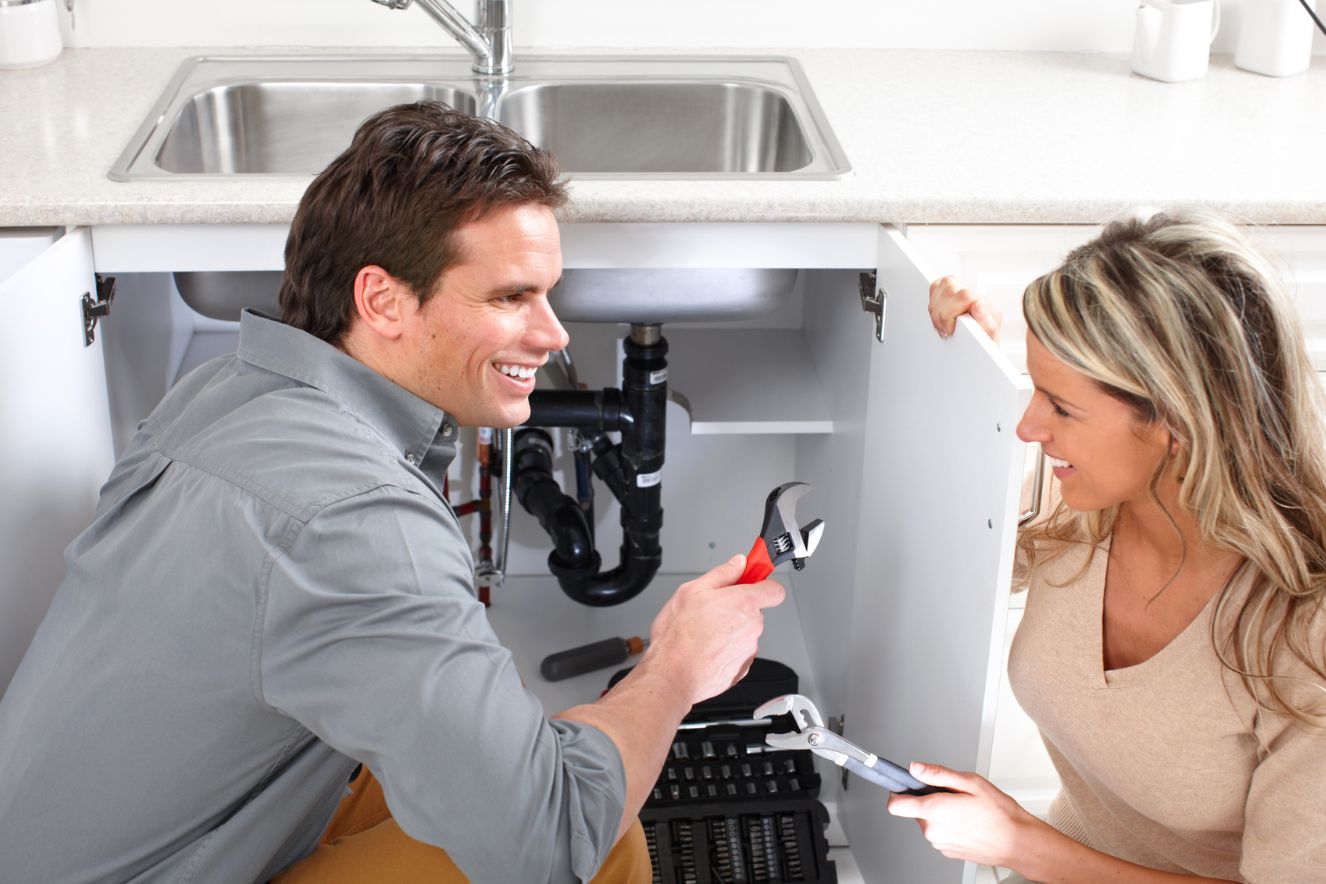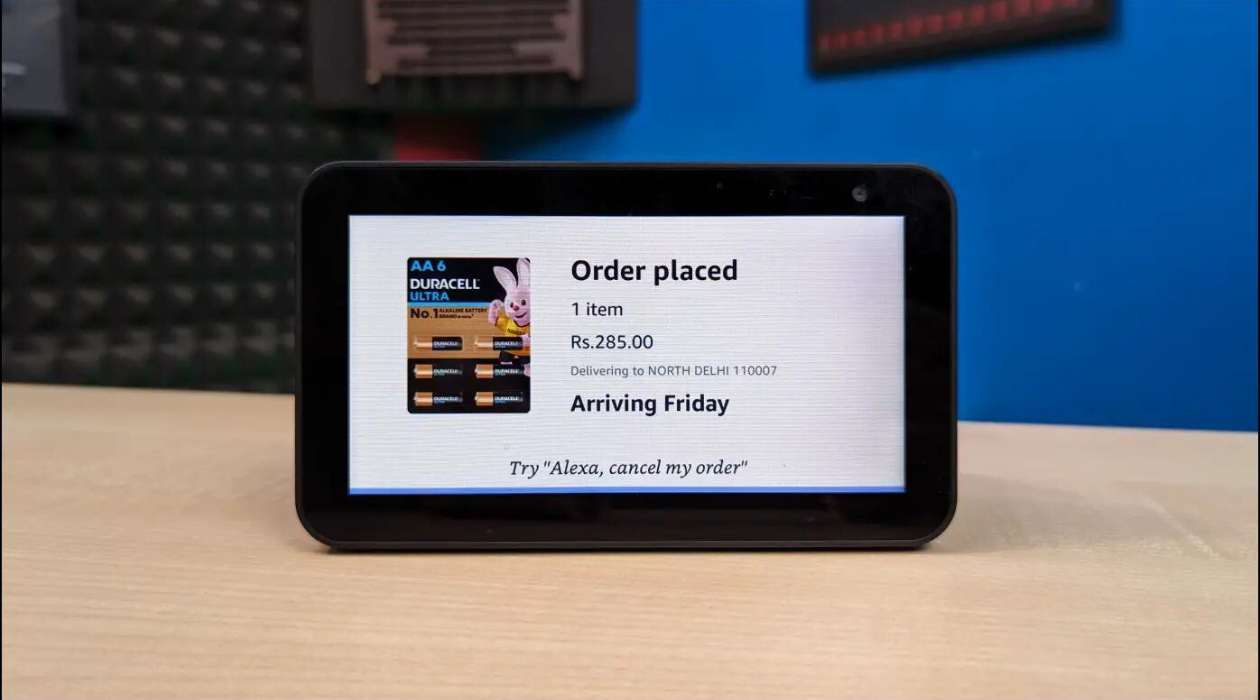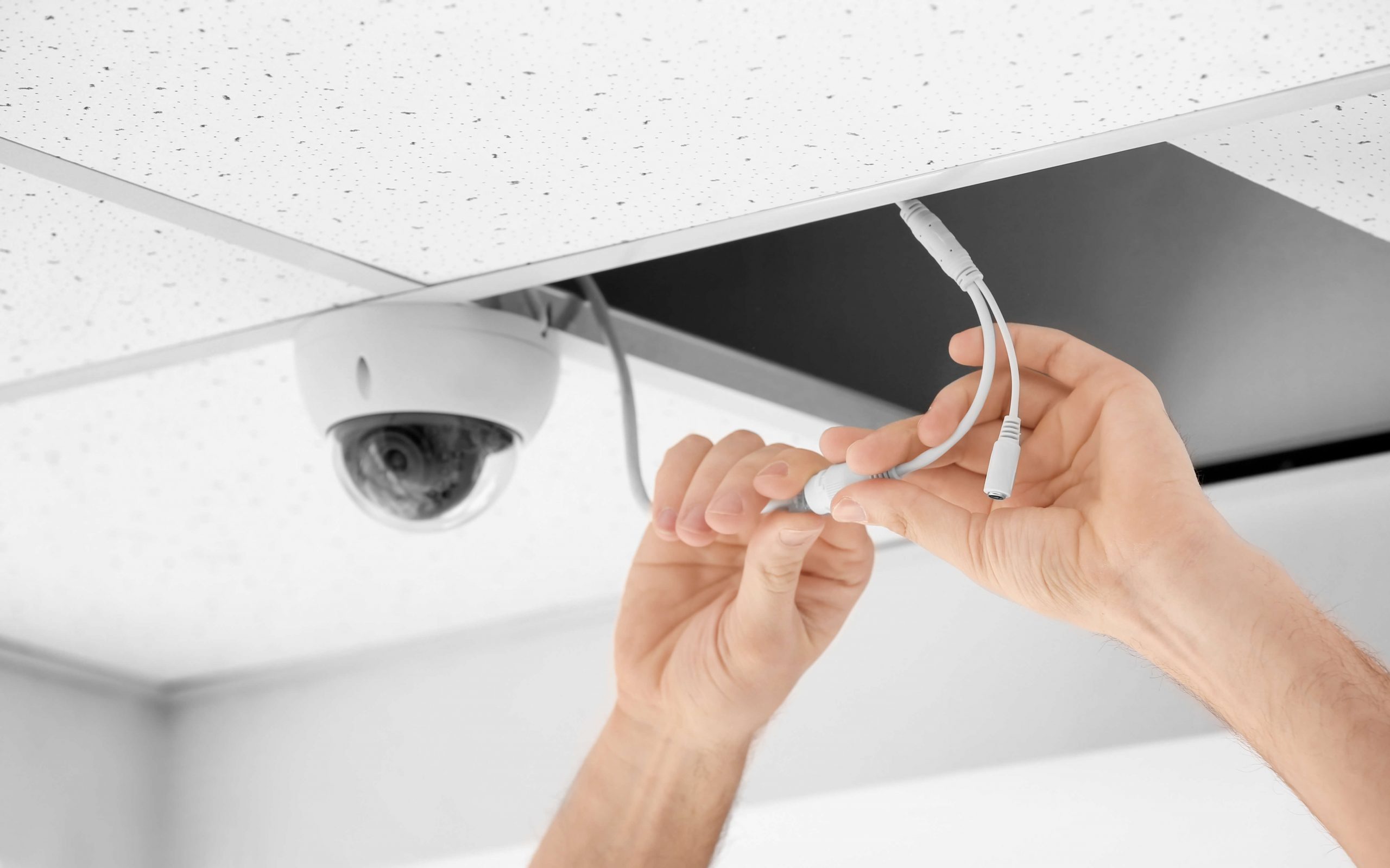Home>Home Maintenance>What Order To Do Home Repairs


Home Maintenance
What Order To Do Home Repairs
Modified: March 6, 2024
Discover the ideal order to tackle home repairs with our comprehensive guide. From routine maintenance to major renovations, learn how to prioritize your projects efficiently.
(Many of the links in this article redirect to a specific reviewed product. Your purchase of these products through affiliate links helps to generate commission for Storables.com, at no extra cost. Learn more)
Introduction
Welcome to the world of home repairs, where the satisfaction of fixing something with your own two hands is unmatched. Whether you’re a seasoned DIY enthusiast or a newbie homeowner looking to save some money, knowing the correct order to tackle home repairs can make all the difference. By prioritizing safety concerns, addressing urgent repairs, and systematically working through the various aspects of your home, you can ensure that your home remains in tip-top condition for years to come.
Assessing the repairs needed in your home is an essential first step. Take a thorough inventory of any issues, both big and small. From leaky faucets to cracked walls, note down everything that requires attention. This will help you create a comprehensive plan of action.
Prioritizing safety concerns should be the top priority. Issues such as faulty electrical wiring, gas leaks, or structural instability pose significant risks to you and your family’s well-being. Make sure to address these immediately, even if they aren’t the most visually appealing repairs. Safety should always be the first consideration.
Next, tackle any urgent repairs that may not pose an immediate safety risk but can lead to further damage if left unattended. This includes fixing roof leaks, repairing broken windows, or addressing plumbing issues that could cause water damage. By taking care of these repairs promptly, you can prevent more extensive and costly damage down the line.
Structural issues should be given special attention, as they can affect the overall stability and longevity of your home. Cracked foundations, sagging floors, or weak support beams should be professionally assessed and repaired to ensure the structural integrity of your home is not compromised.
Electrical and plumbing problems come next, as they affect the functionality of your home. Faulty wiring, outdated electrical panels, or plumbing leaks can disrupt daily life and even pose safety hazards. Hiring a professional electrician or plumber to address these issues is highly recommended to ensure they are handled correctly.
Once the essential repairs are taken care of, it’s time to turn your attention to fixing walls, floors, and ceilings. Patching up drywall, repairing damaged flooring, and addressing ceiling cracks will enhance the overall appearance of your home.
Updating and upgrading home systems is the next step. Consider upgrading to energy-efficient appliances, installing a new HVAC system, or investing in smart home technology to improve efficiency and convenience. These upgrades not only add value to your home but also enhance your everyday living experience.
Lastly, focus on improving the aesthetic appeal of your home. This can include painting the walls, replacing outdated light fixtures, or adding new landscaping to boost curb appeal. Don’t forget to pay attention to small details like hardware and accessories, as they can make a big difference in the overall look and feel of your home.
By following this systematic order of home repairs, you can ensure that your home remains safe, functional, and visually pleasing. Remember to prioritize safety concerns, address urgent repairs, and work through the various aspects of your home methodically. Whether you choose to tackle the repairs yourself or hire professionals, the key is to approach each repair with careful consideration and attention to detail.
So roll up your sleeves, grab your toolbox, and embark on the journey of home repairs. With the right approach and a bit of elbow grease, you’ll soon have a home that’s not only well-maintained but also a source of pride.
Key Takeaways:
- Prioritize safety concerns and urgent repairs to keep your home safe and prevent further damage. Tackle structural issues, electrical, and plumbing problems systematically for a well-maintained home.
- Enhance your home’s aesthetic appeal by updating systems, repairing walls and floors, and adding personal touches. Balance repairs and upgrades to create a safe, functional, and visually pleasing living space.
Read more: In What Order To Do Home Renovations
Assessing the Repairs
Before diving into home repairs, it’s important to assess the various issues that need attention. Taking the time to assess the repairs allows you to create a comprehensive plan and prioritize the tasks effectively. Here are some steps to follow when assessing the repairs in your home:
- Perform a thorough inspection: Take a close look at every room in your home, both inside and outside. Look for any visible signs of damage, wear and tear, or dysfunctional components. This can include things like water stains, cracked walls, squeaky doors, leaky faucets, or damaged flooring.
- Create a list: As you go through each area of your home, make a detailed list of all the repairs that need to be done. This will help you keep track of everything and ensure that nothing gets overlooked.
- Prioritize the repairs: Once you have the list, it’s time to prioritize the repairs. Start with safety concerns and urgent repairs that require immediate attention. This could include electrical or plumbing issues, structural problems, or any repairs that could lead to further damage if not addressed promptly.
- Consider your budget and time frame: Assess the financial resources and time frame you have available for the repairs. Some repairs may require professional help, while others can be done as DIY projects. Take this into account when determining the order in which you’ll tackle the repairs.
- Consult with professionals: If you’re unsure about the severity or complexity of any repairs, it’s always a good idea to consult with professionals. They can provide expert advice and help you prioritize repairs based on their assessment.
By thoroughly assessing the repairs needed in your home, you can create a clear plan of action. This will ensure that you tackle the most critical repairs first and prevent further damage or safety risks. Remember to take your budget and time constraints into consideration and seek professional guidance when needed.
Prioritizing Safety Concerns
When it comes to home repairs, safety should always be the top priority. Identifying and addressing safety concerns early on can prevent accidents, injuries, and potential property damage. Here are some key safety concerns that should be prioritized:
- Electrical Issues: Faulty wiring, overloaded circuits, and outdated electrical systems can be hazardous. Signs of electrical issues include frequent tripping of circuit breakers, flickering lights, or burning smells. These issues should be addressed immediately by a licensed electrician to ensure the safety of your home.
- Gas Leaks: Gas leaks can pose serious risks, including fire and explosion hazards. If you smell gas or suspect a leak in your home, evacuate the premises immediately and contact your gas provider or a professional for assistance.
- Structural Instability: Cracks in the foundation, sagging floors, or walls that appear to be leaning are signs of potential structural issues. These should be addressed promptly to prevent further damage and ensure the stability of your home.
- Mold and Asbestos: Mold growth and asbestos exposure can lead to respiratory issues and other health problems. If you notice signs of mold, such as a musty odor or visible growth, or suspect the presence of asbestos, it’s important to hire professionals to handle their removal safely.
- Tripping Hazards: Loose or damaged flooring, uneven stairs, and loose handrails can pose a trip and fall hazard. Repair or replace these elements to prevent accidents, especially if you have young children or elderly individuals living in your home.
- Fire Safety: Ensure that your home is equipped with functioning smoke detectors, fire extinguishers, and a well-maintained fire alarm system. Regularly check and replace batteries in smoke detectors, and have fire extinguishers inspected and recharged as needed.
Prioritizing safety concerns means addressing these issues before focusing on other aesthetic or non-urgent repairs. By doing so, you can protect your family, property, and the overall well-being of your home. If you are uncertain about any safety concerns or how to proceed, it’s always best to consult with professionals who specialize in the specific field of concern.
Addressing Urgent Repairs
Urgent repairs are those that, while not necessarily posing an immediate safety risk, still require immediate attention to prevent further damage or costly repairs down the line. These repairs can vary depending on the specific issues in your home, but here are some common urgent repairs that should be addressed promptly:
- Roof Leaks: A leaking roof can lead to water damage, mold growth, and compromised structural integrity. If you notice water stains on the ceiling or walls, or if you find water pooling in your attic, it’s crucial to address the roof leak as soon as possible. Contact a roofing professional to assess and repair the issue.
- Plumbing Leaks: Water leaks can cause extensive damage to your walls, floors, and furniture. If you notice any signs of water damage or hear dripping sounds, locate the source of the leak and have it repaired. This may involve fixing leaky pipes, replacing faulty seals, or repairing a malfunctioning water heater.
- Broken Windows: A broken window not only compromises the security of your home but also leaves it vulnerable to weather elements. Replace or repair broken windows promptly to maintain the integrity of your home and prevent further damage or unwanted intruders.
- Faulty HVAC Systems: HVAC systems play a crucial role in maintaining a comfortable and healthy living environment. If your heating or cooling system is malfunctioning, it’s important to address the issue quickly, especially in extreme weather conditions. Hire a professional HVAC technician to diagnose and repair the problem.
- Water Heater Issues: A malfunctioning or leaking water heater can cause significant water damage and inconvenience. If you experience a lack of hot water, strange noises, or water pooling around the water heater, have it inspected and repaired by a qualified plumber.
- Security Concerns: Address any security-related issues promptly, such as malfunctioning locks, broken door frames, or non-functional security systems. Your safety and the security of your home are paramount, so investing in repairs or upgrades to ensure proper security should be a priority.
Addressing urgent repairs in a timely manner will help prevent further damage, maintain the functionality of your home, and potentially save you from more costly repairs in the future. If you’re unsure of how to go about addressing any of these urgent repairs, don’t hesitate to reach out to professionals with expertise in the respective fields.
Tackling Structural Issues
Structural issues in a home can compromise its stability, safety, and overall value. It’s crucial to address these issues as soon as possible to prevent further damage and ensure the long-term integrity of your home. Here are some common structural issues and steps to tackle them:
- Foundation Problems: Cracks in the foundation, sinking or settling of the foundation, or uneven floors are signs of potential foundation issues. Consult with a structural engineer or foundation specialist to assess the severity of the problem and determine the appropriate solution. This may involve foundation repair techniques such as underpinning or piering.
- Sagging Floors and Roofs: Sagging floors or roofs may indicate structural issues, such as inadequate support or compromised framing. A professional contractor or structural engineer can assess the situation and recommend the necessary repairs, which may involve reinforcing joists, replacing support beams, or repairing trusses.
- Walls and Structural Framing: Cracks in walls, bowed walls, or improperly installed windows and doors can indicate underlying structural issues. Consulting with a professional can help identify the cause and recommend the appropriate repairs, which may involve reinforcing the framing, replacing damaged studs, or addressing issues with load-bearing walls.
- Crawl Spaces and Basements: Damp or flooding crawl spaces and basements can be signs of poor drainage or foundation issues. Addressing the root cause of moisture, such as grading the slopes away from the foundation, installing proper drainage systems, or sealing cracks and gaps, is essential to prevent further damage and mold growth.
- Termite or Pest Damage: Infestations by termites or other pests can compromise the structural integrity of a home. If you notice signs of termite damage, such as hollow sounds when tapping on wood surfaces, holes in wood, or discarded wings, it’s crucial to hire pest control professionals to exterminate the infestation and repair any damage.
Tackling structural issues usually requires the expertise of professionals such as structural engineers, foundation specialists, or contractors experienced in structural repairs. They will assess the problem, recommend the appropriate repairs, and ensure that the structural integrity of your home is restored.
Remember that addressing structural issues promptly is essential to prevent further damage and protect the safety of your home and its occupants. If you suspect any structural issues in your home, it’s recommended to consult with professionals to prevent the problem from worsening.
Fixing Electrical and Plumbing Problems
Electrical and plumbing problems can disrupt daily life and pose safety hazards if left unaddressed. It’s crucial to fix these issues promptly to ensure the functionality, safety, and efficiency of your home. Here are some common electrical and plumbing problems and the steps to fix them:
Electrical Problems:
- Frequent Circuit Breaker Tripping: If your circuit breaker trips frequently, it could be due to overloaded circuits or faulty wiring. Identify the source of the problem by unplugging appliances and redistributing loads. If the issue persists, consult with a licensed electrician to assess and repair the electrical system.
- Flickering Lights: Flickering lights can be caused by loose connections, worn-out bulbs, or faulty light switches. Start by replacing bulbs and tightening loose connections. If the problem continues, it’s advisable to have an electrician inspect and resolve the issue.
- Malfunctioning Outlets: Outlets that don’t work or produce sparks when plugging in devices are signs of electrical problems. Check for tripped GFCI outlets and reset them if necessary. If the problem persists, call a professional electrician to diagnose and repair the electrical outlets and wiring.
- Outdated Wiring: Old or outdated electrical wiring can be a safety hazard and may not meet current electrical codes. In such cases, it’s best to hire an electrician to replace the wiring and ensure the electrical system is up to standard.
Plumbing Problems:
- Leaky Faucets: Leaky faucets not only waste water but also increase your water bill. In most cases, replacing worn-out washers or cartridges can fix the issue. If the leak persists, consider hiring a plumber to assess and repair the faucet.
- Clogged Drains: Slow or clogged drains can be caused by debris build-up or blockages in the pipes. Try using a plunger or drain snake to clear the blockage. If these methods don’t work, it’s best to consult with a plumber who can professionally unclog the drain.
- Running Toilets: A running toilet wastes water and can be caused by a faulty flapper or fill valve. Replace these components to fix the issue. If the problem continues, a plumber can diagnose and repair any underlying issues.
- Water Pressure Problems: Inconsistent water pressure, such as weak or fluctuating flow, can be attributed to sediment build-up, pipe corrosion, or issues with the water supply. Consult with a plumber to identify and resolve the source of the problem.
It’s important to note that electrical repairs should be handled by licensed electricians, and plumbing repairs should be carried out by professional plumbers. DIY repairs can be dangerous and may lead to further damage if not done correctly. Hiring professionals guarantees that the repairs are done safely and efficiently.
By addressing electrical and plumbing problems promptly, you can ensure the proper functioning of your home and minimize potential safety risks. Regular maintenance and inspections are also recommended to catch any issues before they escalate. Remember, safety should always be the top priority when dealing with electrical and plumbing repairs.
Repairing Walls, Floors, and Ceilings
Walls, floors, and ceilings are essential components of your home’s structure and aesthetics. Over time, they may require repairs due to wear and tear or unexpected damage. Here’s a guide on how to repair these key areas in your home:
Walls:
- Cracks and Holes: Fill small cracks and holes in walls with spackling compound or joint compound. Use a putty knife to apply the compound, smoothing it out to create an even surface. Sand the area once the compound is dry, and touch up with paint for a seamless finish.
- Drywall Damage: For larger holes or damaged sections of drywall, cut out the damaged portion in a square or rectangular shape. Insert a new piece of drywall, securing it with drywall screws. Apply joint compound to the seams, feathering it out to blend with the surrounding wall. Sand and paint for a seamless repair.
- Wallpaper Tears: Repair small tears in wallpaper by applying wallpaper adhesive to the back of the torn section, then carefully pressing it back into place. For larger tears, remove the damaged section and replace it with a new piece of wallpaper.
Floors:
- Scratches on Wood Floors: Minor scratches can be camouflaged with a wood touch-up marker or a wood filler. For deeper scratches, use fine-grit sandpaper to smooth the area and then apply a matching wood stain or finish.
- Tile Damage: Replace cracked or chipped tiles by carefully removing the damaged tile with a chisel or grout saw. Clean the area, apply new adhesive, and install a new tile. Once the adhesive sets, apply grout to fill the gaps and wipe away any excess.
- Carpet Stains or Tears: Treat carpet stains with appropriate carpet cleaners or remedies. For small tears or burns, use a carpet repair kit or hire a professional carpet repair service to patch or replace the damaged section.
Ceilings:
- Water Stains: Before repainting, it’s important to address the cause of water stains, such as a roof leak or plumbing issue, to prevent future damage. Once the source of the problem is fixed, apply a stain-blocking primer to the affected area and paint over it to match the ceiling.
- Cracks and Popcorn Ceiling Repair: For small cracks, use a flexible patching compound to fill the gap. For larger cracks or damaged sections, it may be necessary to remove the damaged area, apply a new layer of joint compound, and blend it with the surrounding texture. Repairing popcorn ceilings may require scraping off the damaged area, applying a new texture, and repainting.
When repairing walls, floors, and ceilings, take your time to ensure a proper and thorough repair. Follow product instructions, use appropriate tools, and consider hiring professionals for complex repairs or if you’re uncertain about handling certain materials or techniques.
Remember, repairing these areas not only ensures the structural integrity of your home but also enhances its overall aesthetic appeal. Maintaining and repairing walls, floors, and ceilings will contribute to a more comfortable and visually pleasing living environment.
Updating and Upgrading Home Systems
Updating and upgrading home systems can improve the functionality, energy efficiency, and overall convenience of your living space. Whether you’re looking to modernize your home or make it more eco-friendly, here are some key areas to consider:
Read more: What Is A Change Order In Construction
Energy-Efficient Appliances:
Replacing outdated appliances with energy-efficient models can help reduce energy consumption and save you money on utility bills. Look for appliances with Energy Star ratings, which indicate that they meet strict efficiency standards. Consider upgrading to energy-efficient refrigerators, dishwashers, washing machines, and HVAC systems for maximum energy savings.
HVAC Systems:
An efficient heating, ventilation, and air conditioning (HVAC) system is essential for maintaining a comfortable indoor environment. If your system is old or inefficient, consider upgrading to a newer model with better energy efficiency. Additionally, programmable thermostats and zoning systems allow for more precise control over temperature settings, further optimizing energy usage.
Smart Home Technology:
Smart home technology has become increasingly popular in recent years, offering enhanced convenience, security, and energy efficiency. Install smart home devices such as programmable lighting systems, smart thermostats, or home security systems that can be controlled remotely. These advancements not only make your life easier but also contribute to the overall value of your home.
Plumbing Fixtures:
Upgrading plumbing fixtures can improve water efficiency and reduce water waste in your home. Install low-flow faucets, showerheads, and toilets to conserve water without compromising performance. Upgrading to a tankless water heater can also provide hot water on-demand and reduce energy consumption.
Read more: What Is A Work Order In Construction
Electrical System Upgrades:
If your home has an outdated electrical system or insufficient electrical outlets, consider upgrading to meet the demands of modern technology. Additional outlets, USB ports, and dedicated circuits for high-power appliances can make your home more functional and convenient.
Insulation and Weatherproofing:
Proper insulation and weatherproofing are crucial for energy efficiency and comfort. Add insulation to walls, attics, and crawl spaces to reduce heat transfer and lower your energy bills. Seal gaps and cracks around windows and doors to prevent drafts and maintain a consistent indoor temperature.
When updating and upgrading home systems, it’s important to consider your specific needs, budget, and long-term goals. Research the latest technologies and consult with professionals to determine the best solutions for your home. These improvements not only enhance your living experience but also increase the value and marketability of your property.
Improving Aesthetic Appeal
Enhancing the aesthetic appeal of your home can make it more inviting, visually pleasing, and reflect your personal style. Whether you’re planning to sell your home or simply want to create a more enjoyable living space, here are some ways to improve the aesthetic appeal of your home:
Fresh Coat of Paint:
One of the most effective ways to transform the look of your home is by giving it a fresh coat of paint. Choose colors that complement the style of your home and create the desired atmosphere in each room. Don’t forget to prep the surfaces properly by cleaning, sanding, and priming before applying the paint.
Read more: What Is The Proper Order Of Tableware?
Upgrade Lighting Fixtures:
Upgrading outdated lighting fixtures can instantly modernize your home and add a touch of elegance. Replace old and dull fixtures with statement pieces that reflect your personal style. Consider incorporating a mix of ambient, task, and accent lighting to create a warm and inviting atmosphere.
Revamp Flooring:
Replacing or refinishing flooring can dramatically transform the look and feel of your home. Consider options such as hardwood, laminate, tile, or luxury vinyl plank flooring to suit your style and budget. Refinishing existing hardwood floors can also breathe new life into your home’s interior.
Window Treatments:
Updating window treatments can add a touch of style and privacy to your home. Choose curtains, blinds, or shades that complement the color scheme and overall decor. Layering different window treatments can create a dynamic and visually appealing look.
Enhance Curb Appeal:
Your home’s exterior is the first impression guests or potential buyers will have. Enhance curb appeal by maintaining a well-manicured lawn, adding fresh landscaping, and updating the front door and porch area. Consider a fresh coat of paint for the exterior and updating or adding shutters or window boxes for added charm.
Read more: How To Order Home Decor Straight From China
Accessorize and Declutter:
Adding decorative accessories and decluttering can instantly make your home feel more inviting and polished. Display artwork, decorative accents, and statement pieces that reflect your personal taste. Remove excess clutter and organize storage spaces to create a clean and spacious feel.
Update Hardware and Fixtures:
Replacing outdated hardware and fixtures can make a significant impact on the overall aesthetic of your home. Upgrade doorknobs, cabinet handles, faucets, and light fixtures to modernize the look and create a cohesive design throughout your living space.
Improving the aesthetic appeal of your home requires attention to detail and a focus on creating a cohesive and visually pleasing environment. Take your time to plan and execute these improvements, and consider seeking the assistance of a professional interior designer for guidance and advice.
Remember, creating a home that reflects your personal style and makes you feel comfortable and proud is the ultimate goal. Improving the aesthetic appeal not only enhances your enjoyment of your home but can also increase its value and desirability in the eyes of potential buyers.
Conclusion
Taking care of your home’s repairs and maintenance is essential to keep it safe, functional, and visually appealing. By following a systematic approach and prioritizing key elements, you can tackle home repairs in a logical and effective way. Start by assessing the repairs, prioritizing safety concerns, and addressing urgent repairs to prevent further damage and ensure the well-being of your home and its occupants.
Tackling structural issues, fixing electrical and plumbing problems, and repairing walls, floors, and ceilings will improve the overall condition of your home. By investing in updating and upgrading home systems, you can enhance energy efficiency, convenience, and comfort. Improving the aesthetic appeal through painting, upgrading lighting fixtures, revamping flooring, and accessorizing will create a more visually appealing and enjoyable living space.
Remember, it’s important to balance repairs and upgrades with your budget, time constraints, and long-term goals for your home. While some repairs may be suitable for DIY enthusiasts, others require professional expertise to ensure they are done safely and correctly. Don’t hesitate to consult with professionals when needed and to prioritize your safety and the structural integrity of your home.
By following the order outlined in this article and giving each repair the attention it deserves, you can maintain and improve your home for years to come. Regular maintenance, periodic inspections, and addressing issues promptly will save you time, money, and potential headaches down the line.
So roll up your sleeves, gather your tools, and embark on the journey of home repairs. With a solid plan, attention to detail, and a bit of creativity, you can transform your home into a safe, functional, and aesthetically pleasing space that you truly enjoy.
Frequently Asked Questions about What Order To Do Home Repairs
Was this page helpful?
At Storables.com, we guarantee accurate and reliable information. Our content, validated by Expert Board Contributors, is crafted following stringent Editorial Policies. We're committed to providing you with well-researched, expert-backed insights for all your informational needs.










0 thoughts on “What Order To Do Home Repairs”